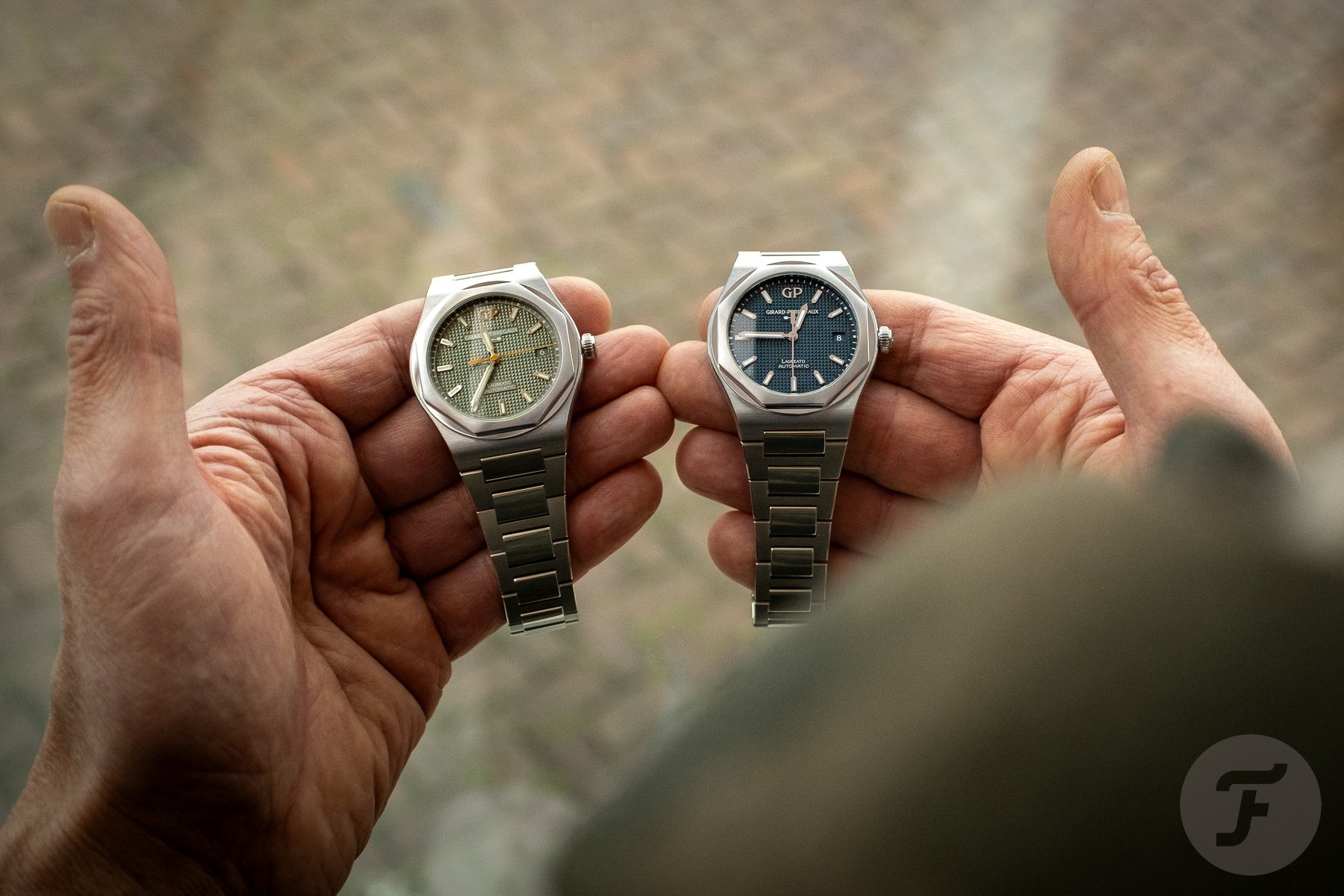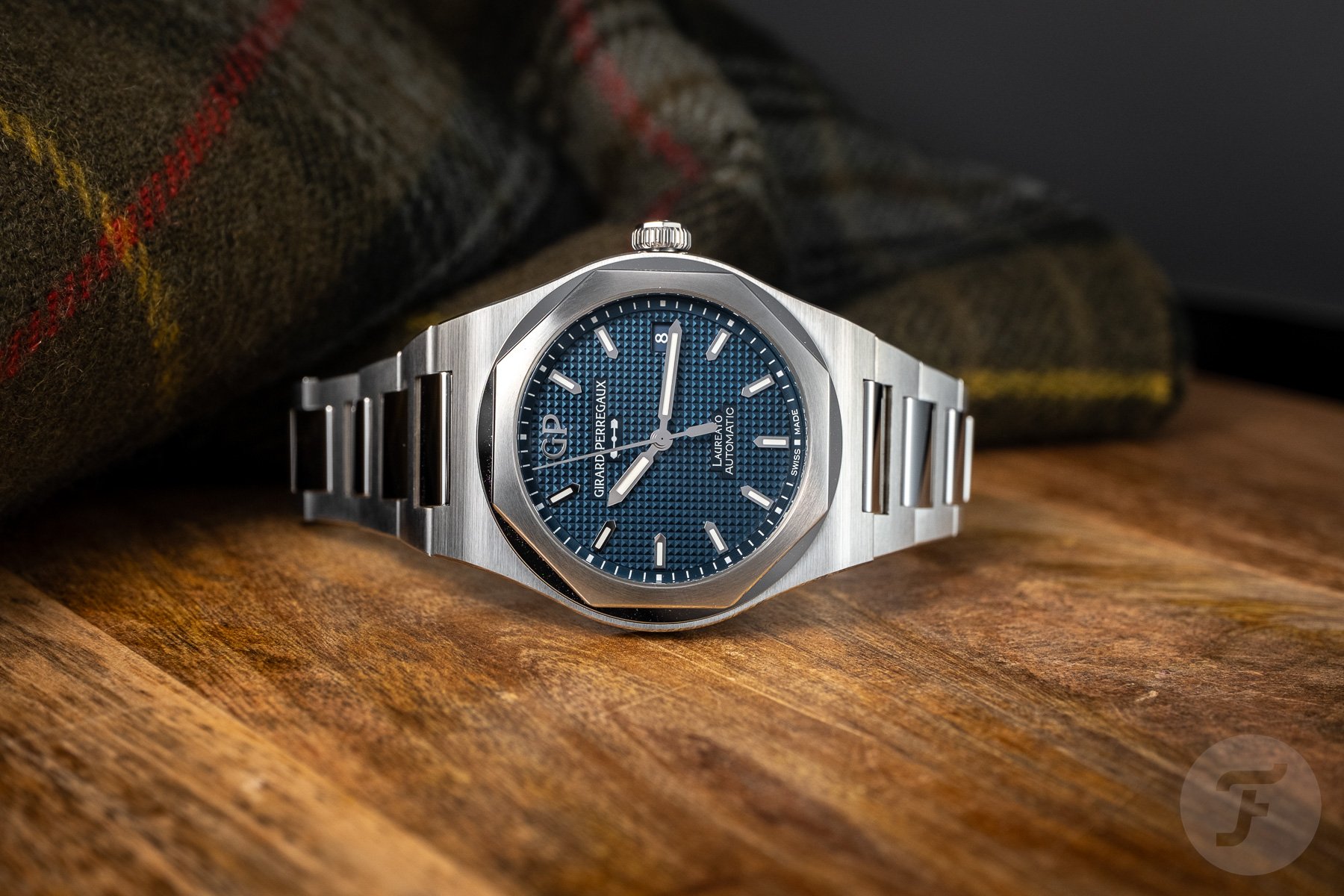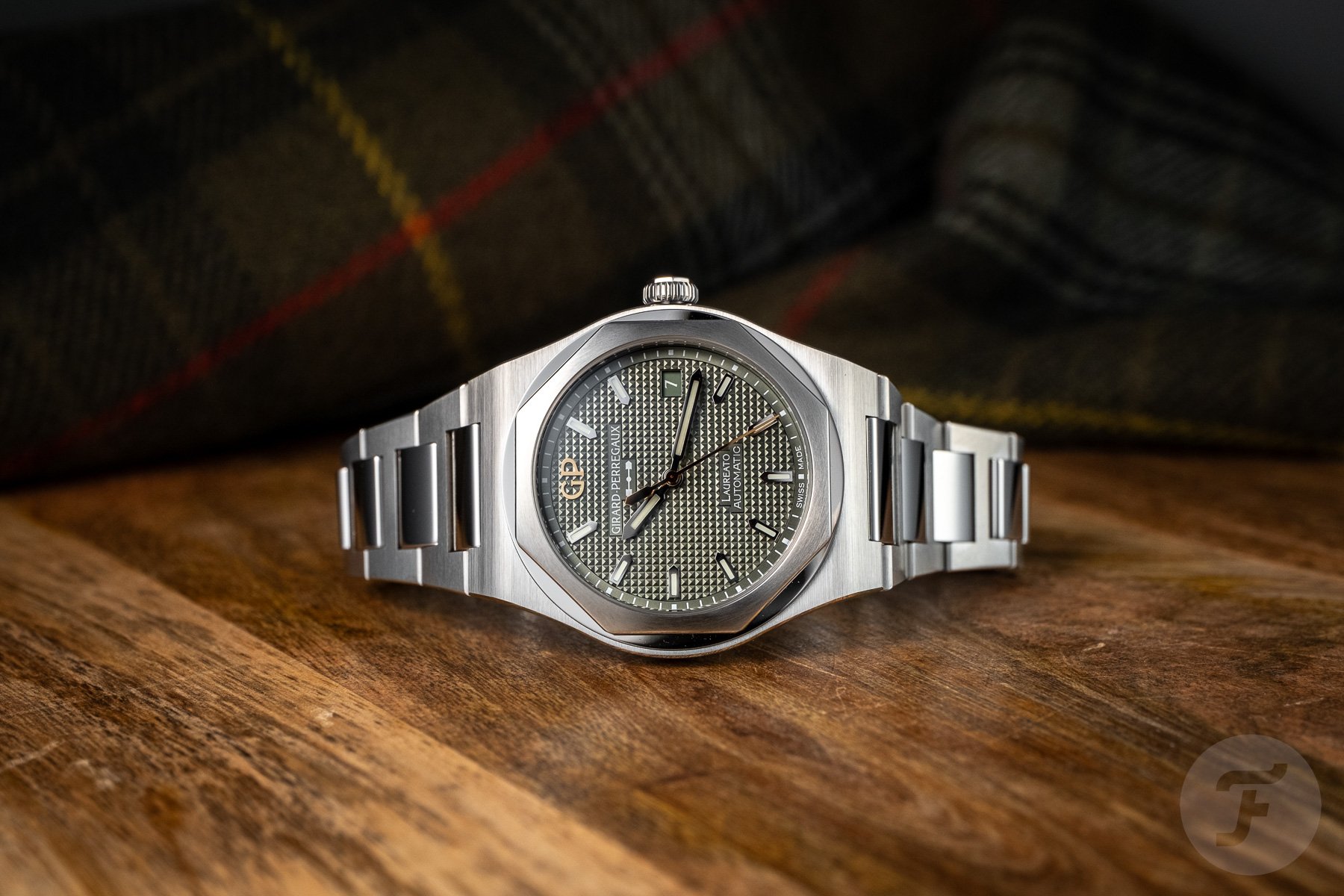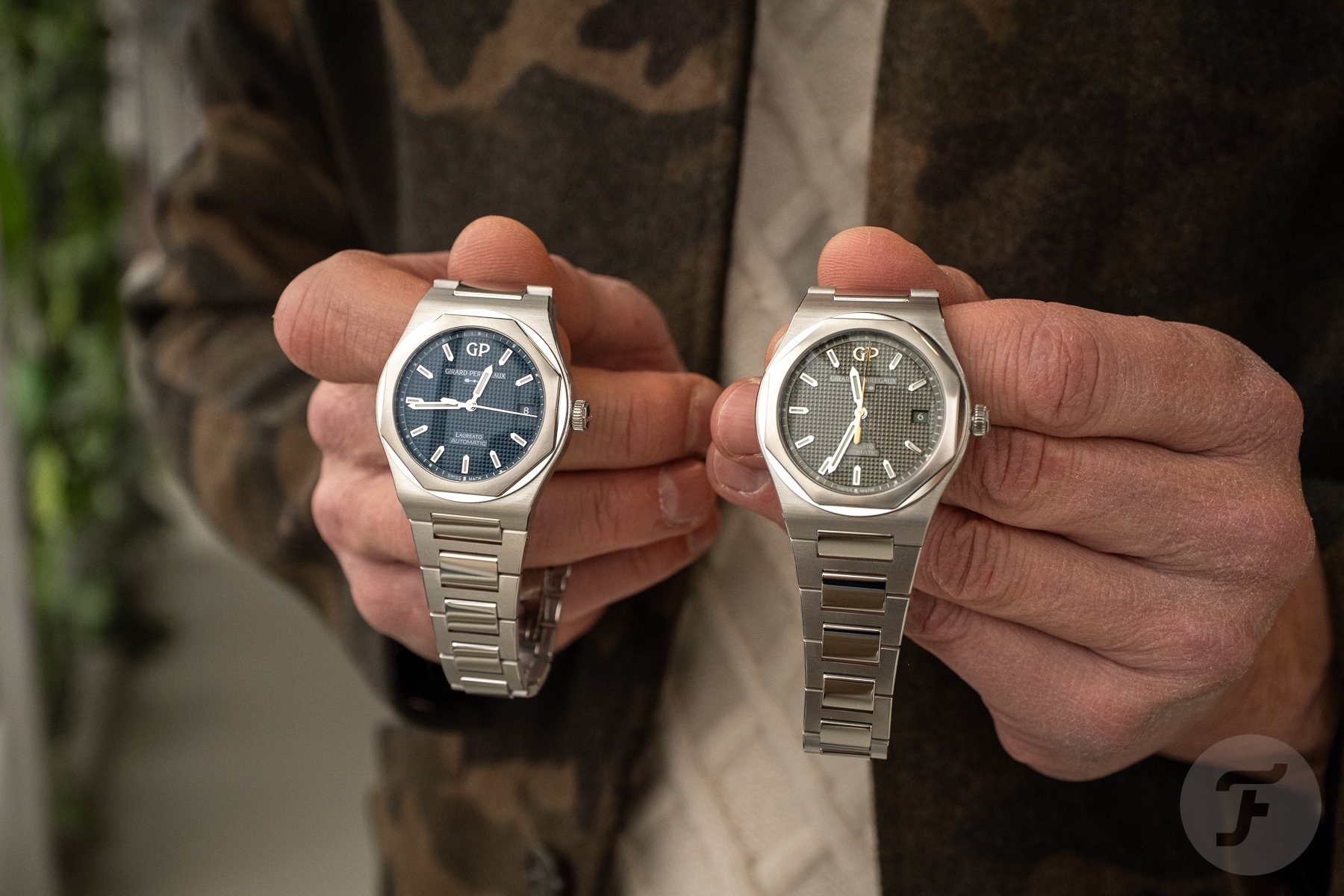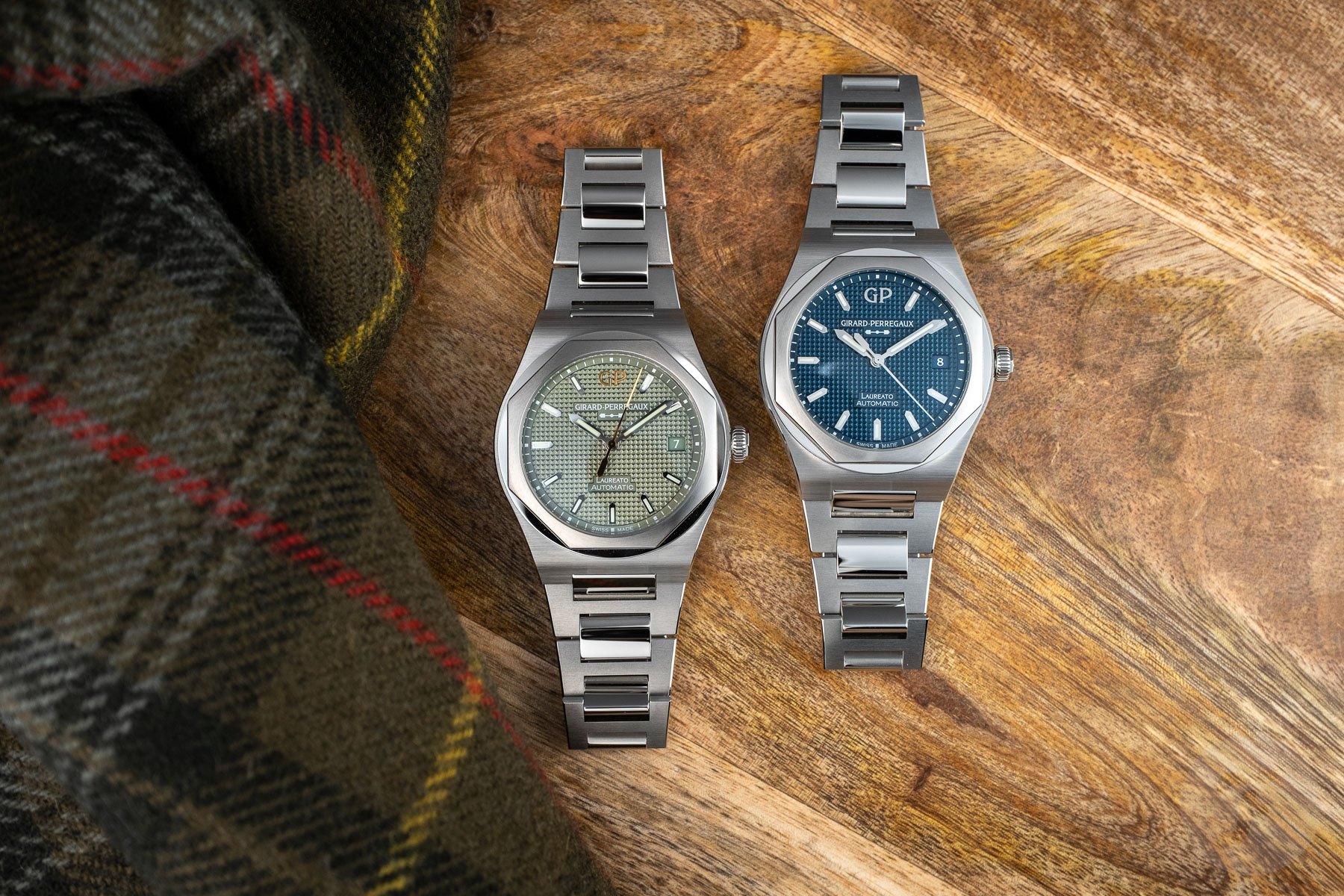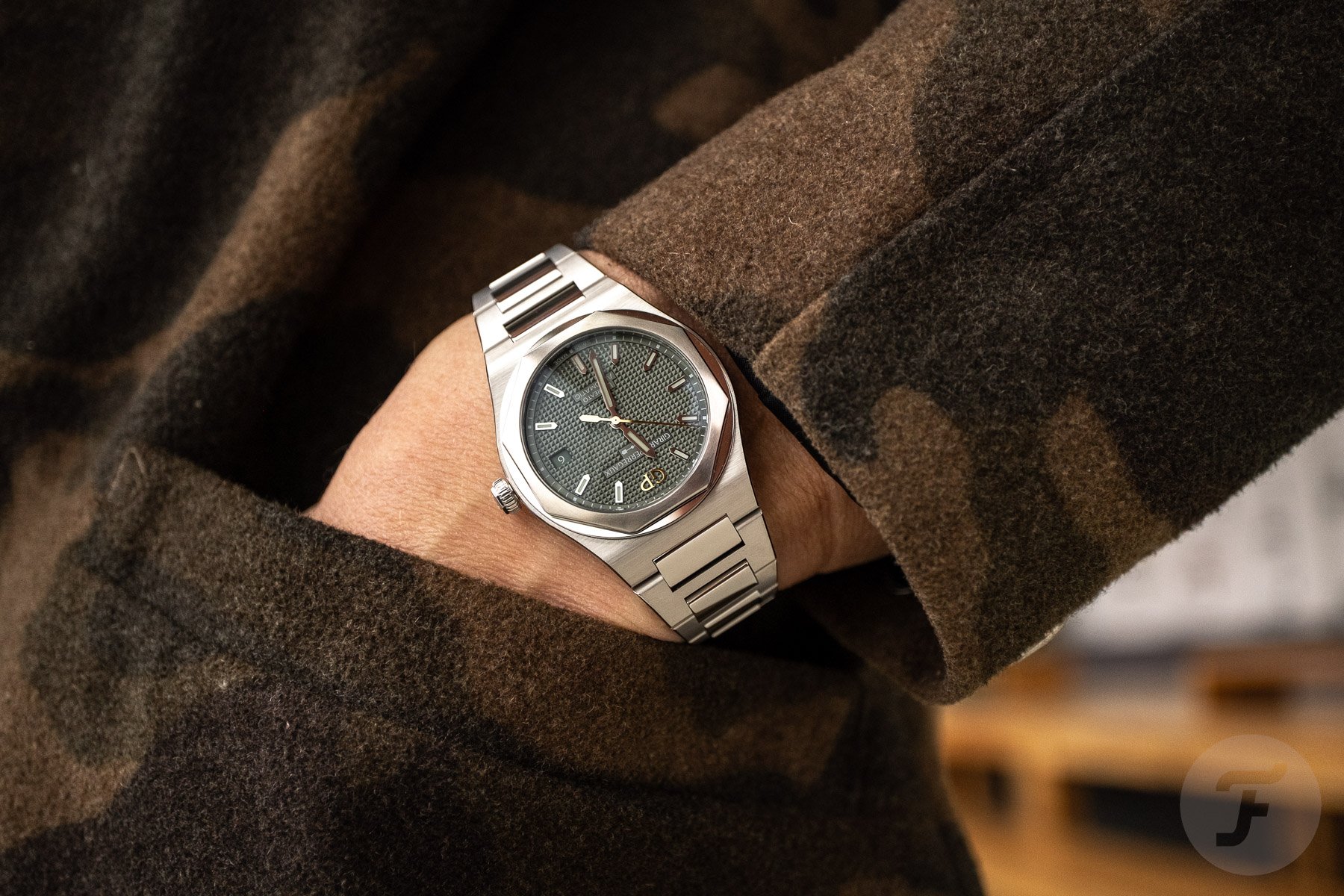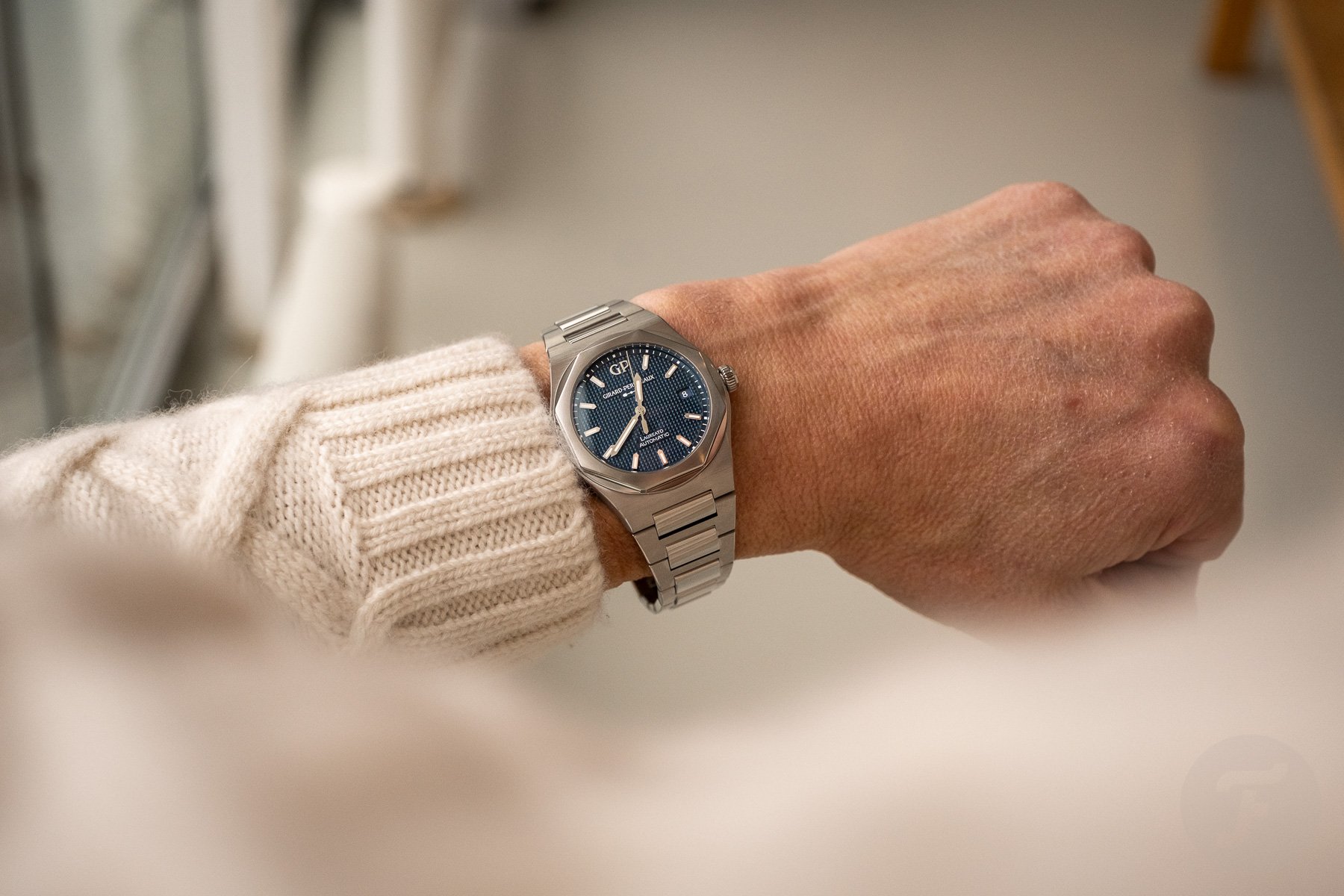Hands-On With An Unsung And Humble Hero — The Girard-Perregaux Laureato 38mm In Steel
It predates the Nautilus, Ingenieur, and Overseas and debuted three years after the Royal Oak. So why is the Girard-Perregaux Laureato, a very relevant 1970s timepiece, not on the same appreciation level as the other luxurious sports watches with an integrated bracelet? It’s not just the Genta name missing because the 222, the predecessor of the current Overseas, is also a non-Genta design. German designer Jörg Hysek drew the 222, and it was an anonymous “GP” employee who created the 1975 bimetallic Quartz Chronometer, a tonneau-shaped watch with an octagonal bezel and the forebear of the Laureato. The answer lies in GP’s reputation. The brand’s recent history has not been as steady as the competition. However, perception changes if you try hard to forget all about it and just focus on the watch. That’s how I approached the two versions of the Girard-Perregaux Laureato 38mm in steel.
Artist unknown. This doesn’t compare to having Rembrandt van Rijn’s signature on a painting. For a long time, the common belief was that Adolfo Natalini (1941–2020) — a man who co-founded the architectural company Superstudio, became a member of the Architectural School of Pistoia and was one of the pioneers of the radical architettura movement of the 1960s and ’70s — designed the Laureato. But thanks to WatchProSite, we now know that a Girard-Perregaux employee, who shall forever remain nameless, was responsible for the watch design that would become the Laureato.
The Girard-Perregaux Laureato 38mm in steel is a sight for sore eyes
Possibly because I’ve been interested in Haute Horlogerie for many decades, the name Girard-Perregaux evokes thoughts about the highest echelons of watchmaking. I see the brand rivaling Vacheron Constantin, Audemars Piguet, and even Patek Philippe. How times have changed for Haute Horlogerie. Grand complications are no longer the watches people dream about. Instead, luxurious sports watches with integrated bracelets from the mentioned watchmaking brands are the prime objects of desire. This desire is driven by resale value and fueled by social media posts, not by horological interests. And since money rules, it affects the popularity and status of a watch. When you judge a timepiece by its resale value, its appearance becomes neglectable. But if you keep the dollar signs out of sight, the Girard-Perregaux Laureato 38mm in steel sure is a sight for sore eyes.
The size to forget about all other sizes
Not too long ago, I did a hands-on with the Laureato Chronograph Ti49 and loved it. Although on the large side, it has good proportions, the chronograph complication looks right at home in the Laureato surroundings, and the use of titanium works well with the watch’s design. Still, without exception, I prefer a time-only version of a sports watch with an integrated bracelet and (semi)angular looks. Furthermore, size is also of the essence. Watches with the design mentioned above don’t need large dimensions to make their presence known.
The current Laureato collection consists of 38 references, 25 of which are part of the Classic subcollection. The majority have a 42mm case diameter. The chronograph versions get away with that, but the open-worked versions and the references with a closed dial are too large, I feel. For reference, the 1975 original quartz watch was a tiny creation with a case diameter of just 35mm. It makes sense that, over time, the Laureato increased in size, but 42mm is pushing it. The Laureato Absolute 8Tech with its 44mm carbon/titanium composite case is what the Royal Oak Offshore is to the Royal Oak, but maybe it’s just not executed as well. Anyway, back to the 38mm Laureato models with a Sage Green or Midnight Blue dial (€15,700 / US$14,900).
Observing the “Hobnail Effect”
The most outspoken element of the Laureato is neither the layered bezel with its circular-brushed octagonal top, nor is it the sleek, polished case flanks. It’s also not the H-link bracelet that seamlessly transitions from the case and wears very well despite the rather simple butterfly clasp. Rather, it’s the dial that gives the Laureato 38mm a very distinct look. The Sage Green and Midnight Blue colors also display subtle hints of gray and have a sophisticated Clous de Paris pattern. And it’s that hobnail texture that consists of tiny pyramids that cause the color to change subtly and dynamically.
Although very small, the miniature three-dimensional elements are a huge factor in how the Laureato 38mm presents itself. The rhodium-plated, polished, and applied indexes and hands, all treated with a fair amount of Super-LumiNova, provide a refined contrast. At the same time, the shiny nature of the indexes and hands complements the polished parts of the watch. The version with the Sage Green dial, with its cool tundra-gray hue, subtly differs from the Midnight Blue version. For example, it has a gold-plated GP logo and central seconds hand to add a bit of luxurious warmth and contrast.
The least moving aspect of the Laureato 38mm in steel
From a movement perspective, the Laureato 38mm is not the most interesting watch in the world, but such is the case with most three-hand luxury sports watches. The in-house GP03300 caliber is an automatic 25.95 × 3.36mm movement comprised of 218 parts. This is the workhorse in GP’s caliber collection. Apart from the central hours, minutes, and seconds hands, it has a date function, a 4Hz beat rate, and a power reserve of 46 hours. You see the oscillating weight in contrasting 18K rose gold swinging through the sapphire window of the case back. And when you take a closer look, you’ll also find blued screws, straight and circular Côtes de Genève finishing, and polished chamfers.
Wearing the 38mm version of the steel Laureato three-hander
When you take the Laureato 38mm from the box, it looks on the small side. You immediately notice the level of finishing because the watch feels smooth and presents itself with a lovely luster. Once on the wrist, the first impression that made you doubt if the watch would not be too small immediately dissolves. The proportions of the tonneau-shaped case, with its softly shaped bezel and seamless integrated bracelet, create a look that leaves nothing to be desired. The size makes this Laureato equally sporty and classic as it is elegant and flamboyant. It’s small and discrete enough to disappear under the cuff, but it shows charismatic confidence when worn visibly.
Final words on the Girard-Perregaux Laureato 38mm and the unsung hero
Although the Laureato 38mm was the article’s main focus, the timepiece’s anonymous designer returned to my mind after wearing the watch. The Laureato is not as edgy as the Royal Oak, it lacks the slight quirkiness of the Nautilus, and it’s also not as bold and brash as an Overseas. It’s closer to an introvert Ingenieur, but the Laureato is smoother and sleeker. Also, the Laureato has such a balanced design that it’s easy on the eye. We have to give praise to the anonymous genius who composed the Laureato.
Not having a famous name attached to the watch should not be a problem. You can judge the watch based on its timeless and tasteful design without any connotation clouding your judgment. And if you still need a story for context and confidence to tell yourself or your peers, the story of an unsung hero who will forever remain a mystery certainly stands the test of time. How the Laureato got its name is an anecdote for another day…

